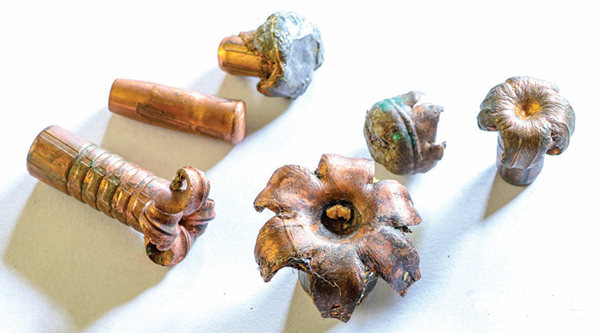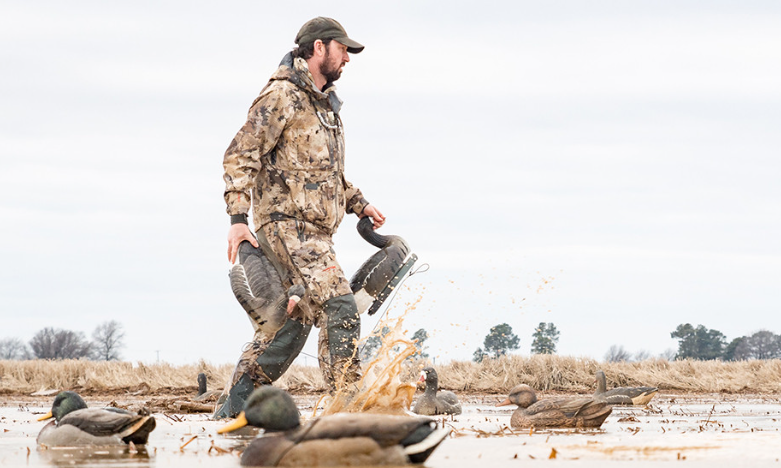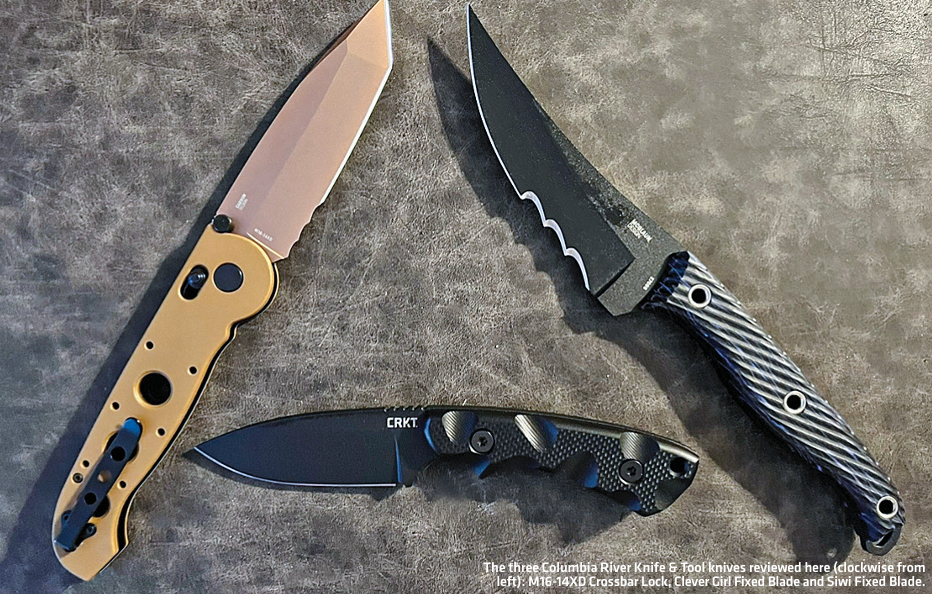Chiappa’s Little Badger Survival Rifle
Review and photographs by Frank Jardim

I first encountered the Chiappa Little Badger single-shot, I pegged it as a survival rifle. It comes in basic black, either in 22LR or 22WMR, both of which are fine for small game. With an overall length of 31 inches, it is already small, but it also folds over and onto itself, creating an extremely compact triangle about 16.5 inches tall and 8 inches across the base. It weighs less than 3 pounds, making it only slightly heavier than large center-fire pistols.
The Little Badger’s overall design principal is minimalistic. The Chiappa engineers gave the little gun everything it needs but resisted the temptation to load it down with things it didn’t.

For example, it has no foregrip other than four 4-inch pieces of Picatinny tactical rail attached to the flats of the barrel shroud. They form a good gripping surface and give the shooter a place to mount a 4X scope and perhaps a tactical light for hunting nocturnal creatures, like raccoons and opossums. If you mount a scope, the factory offers a horizontal bar you can attach to the grooved thumb portion of the hammer that lets you cock it from either side of the scope. Also, there is no safety other than a half-cock notch on the hammer. A survival rifle should be rugged, and mechanically simple. The Little Badger fits the bill.


The factory sights are M1 Carbine-style fixed front with an adjustable rear. The large knob allows for precise click adjustments for windage, and elevation is adjusted using a sliding rear aperture that has six different positions, four of which are numbered, but this slide can easily be pushed out of place if you aren’t careful. The sights, like the rail, ammunition holder and buttplate, are made of plastic, which didn’t appeal to me, but this is not an expensive rifle with an MSRP of $225, and they worked fine. My only concern is that they might not prove durable enough for long-term field use. Then again, my testing was not destructive and these parts might prove fully adequate. The rifle’s receiver, barrel shroud and trigger guard are made of hard zinc alloy. The hammer, trigger, action-release lever, extractor, all the screws and pins, barrel and wire buttstock are made of steel.
The wire buttstock was surprisingly comfortable, and its length and comb height can be adjusted to a limited degree by loosening the screws that hold the left and right sides of the receiver, pulling the upper and lower legs of the stock in or out, and then retightening. I found that my eye naturally lined up with the sights, so I didn’t change a thing.


During accuracy testing, I shot from a sandbag rest at 25 yards. To get shots on my point of aim, I set the elevation slide to “2.” My best results came from Winchester 22LR, 36-grain, copper-plated hollow points, which turned out an average group size of 1.42 inches and an average velocity of 1,199 feet per second, measured 12 feet from the muzzle. A close second was the Federal Lightning 22LR 40-grain, solid lead bullet, which turned out groups averaging 1.54 inches and an average velocity of 1,204 fps. I experimented by plinking with a mixed bag of loose ammo that I had accumulated over the years and found that the rifle seemed to shoot quite well overall. I started to feel as though I couldn’t miss with it, which I credit to an excellent trigger. This is a survival rifle with a target rifle’s trigger. It breaks crisply at just under 5 pounds. Tin cans, milk jug caps, broken PEZ dispensers and squirrels, beware! There is a new sheriff in town and it is a Little Badger.

I had a lot of fun shooting this rifle. In the process of evaluating it, I concluded that this is a great rifle to teach youngsters to shoot with. Its small scale and light weight made it easy for them to hold. It is a single shot, which takes a lot of the is-that-magazine-empty anxiety out of the instructional process. Using the round ammo holder in the stock, young students feel they have responsibility for their rounds, and allows you to visually keep track of it so no one ends up having unauthorized ammo for show-and-tell back at school. We all know these days that that will lead to expulsion from school for the student, and potential life imprisonment for you.

In many respects, this rifle is a reincarnation of the old Quackenbush and other youth bicycle rifles. Inexpensive, small, light, collapsible for easy transport and intended for fun wherever a kid’s (or grown-up’s) feet might pedal them, this type of rifle was very popular around 1900. The Little Badger even comes with its own light nylon backpack carrying case, adorned with a Little Badger head. The Chiappa Little Badger is a kid-sized gun that any boy or girl could easily learn to shoot with, and then keep for the rest of their lives. AmSJ
Author’s note: You can get more information on this and other Chiappa products at Chiappafirearms.com












